Pavapro is relatively small, pocket-able device, allowing you to operate above microSD card, reading binary files (for now only .bin files are supported) and load those files into target AVR device. In addition to this, fuses files (ASCII text files) can be loaded too and fuses written into AVR.
Apart from that, pavapro allows you to open/edit/save text files, as well as there is also simple file viewer, when you don't want to mess with editor.
As if it wasn't enough, simple ASCII serial terminal is included too, allowing to view incoming data on CMOS or RS232 levels.
Its dimensions are 118x71x19mm, runs on single Li-Ion or Li-Pol battery, consuming approximately 20mA when running - so, classic 600mAh type will allow to run approximately for 30 hours on single charge. It can be charged from USB micro connector, serving as well for firmware update.
The user IO is done via 16-keys keypad and 128x64 OLED display. The electrical IO is 6-pin AVR ISP header (alternatively it can serve as 5xADC input or 4xIO line) and USART on CMOS levels as well as RS232 levels, plus one universal CMOS IO on second 6-pin connector.
Total price of components was around 20EUR + PCB price (could be anything, beginning from 0EUR if you have good fellow hacker, thank you David!)
The develoment of pavapro was done on free (as freedom) or free (as beer for free) tools under Linux and all design source files are freely available on github - so anyone can take the project, build, alter and contribute.
My main development machine runs on Xubuntu, software development was done using Gedit/GCC/Arduino IDE, hardware development - Eagle for PCB design (in fact, the only exception from open-source tools) FreeCAD for 3D modelling and Slic3r/Pronterface for 3D printing.
Though I'm running on FOSS tools, I understand that a lot of people runs windows OS, so I took care to select tools that have windows conterparts.
Myself, while working on pavapro.
Want to build one? Here is how.
Here is video of pavapro, ressurecting dead arduino
And another video, showing other features of pavapro
 jaromir.sukuba
jaromir.sukuba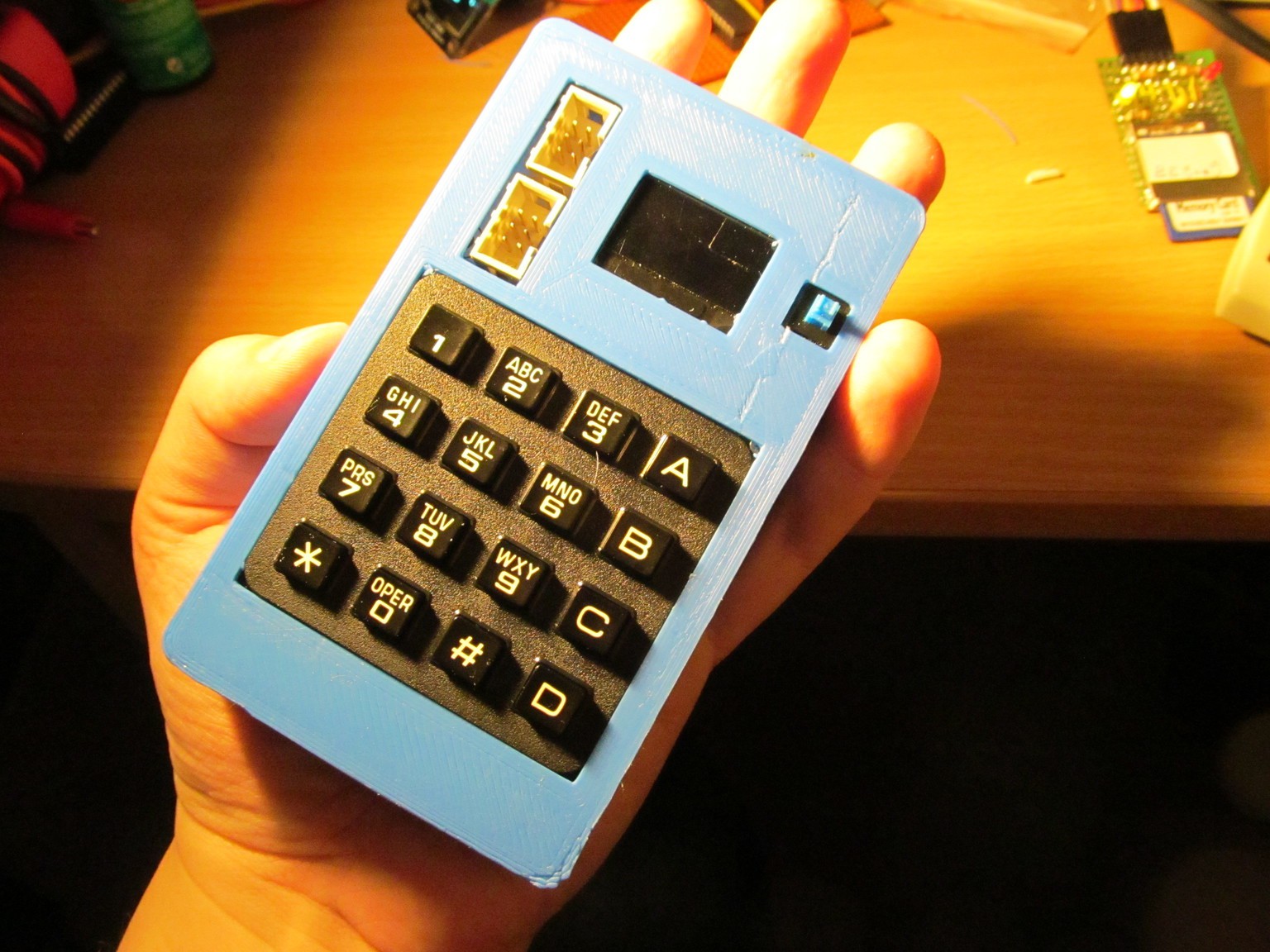
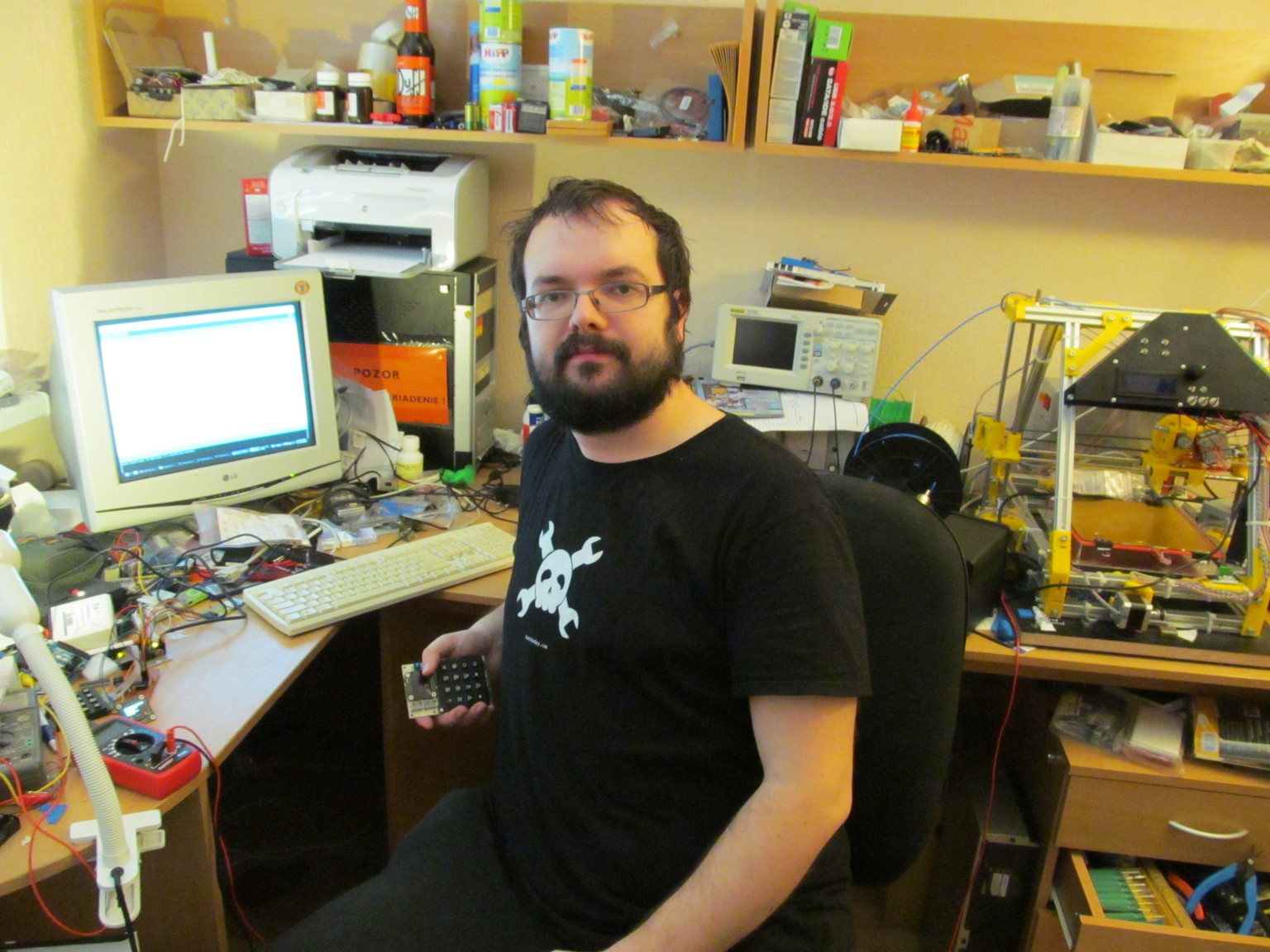
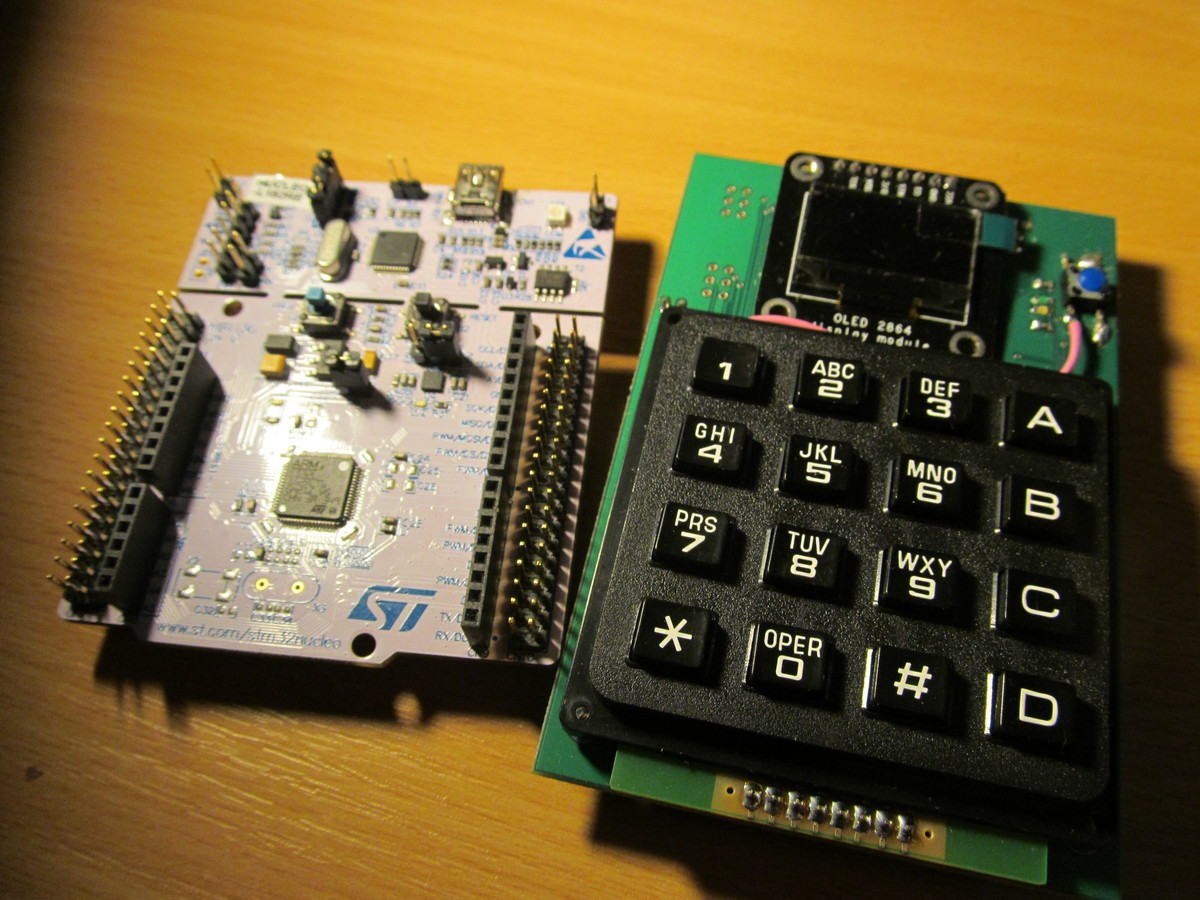
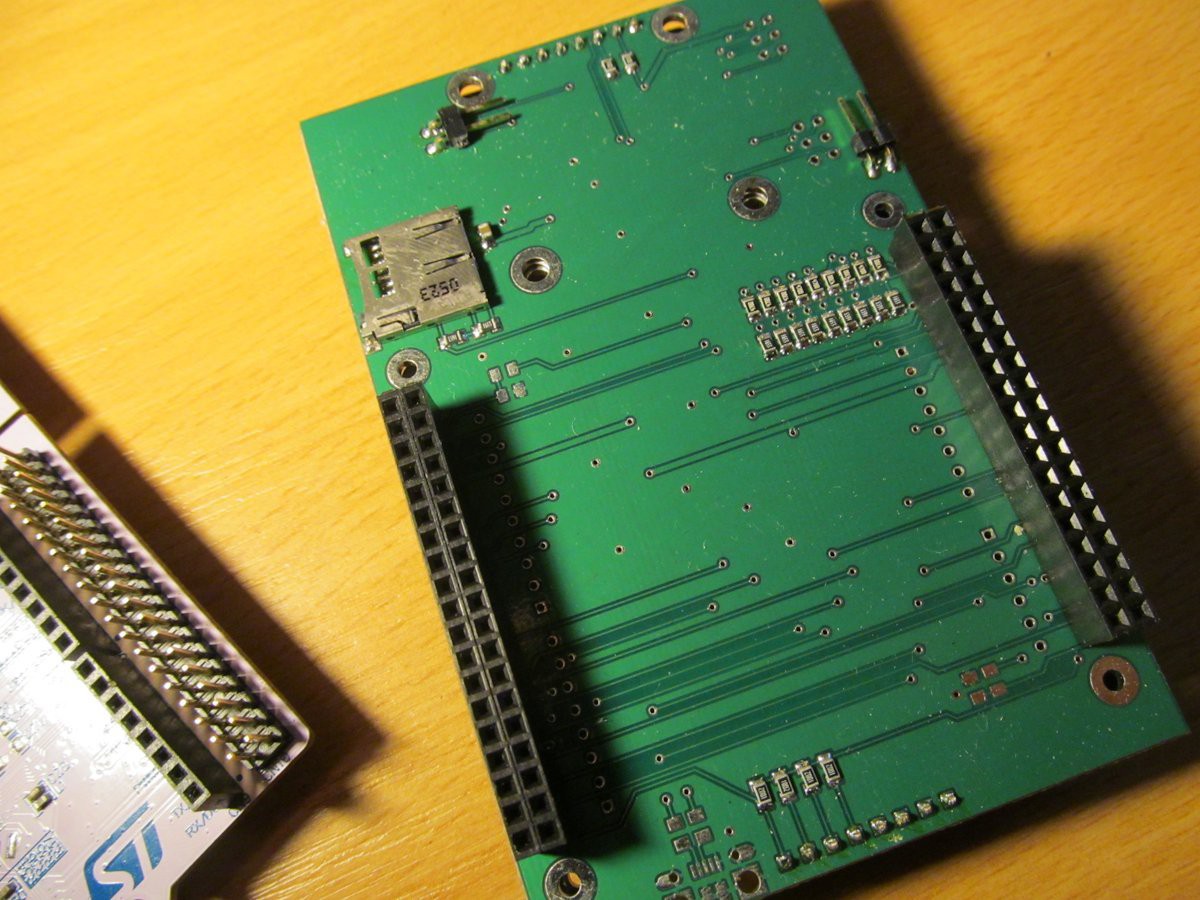
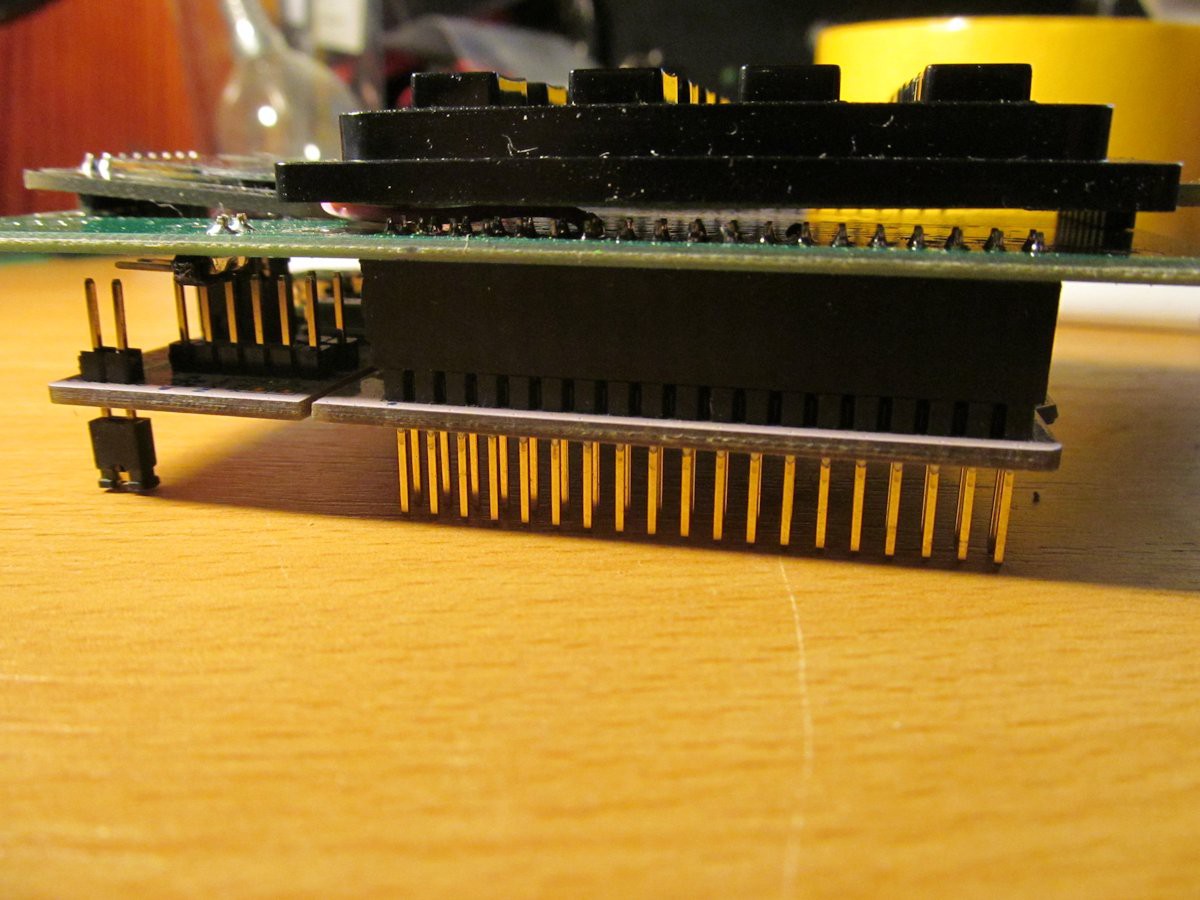
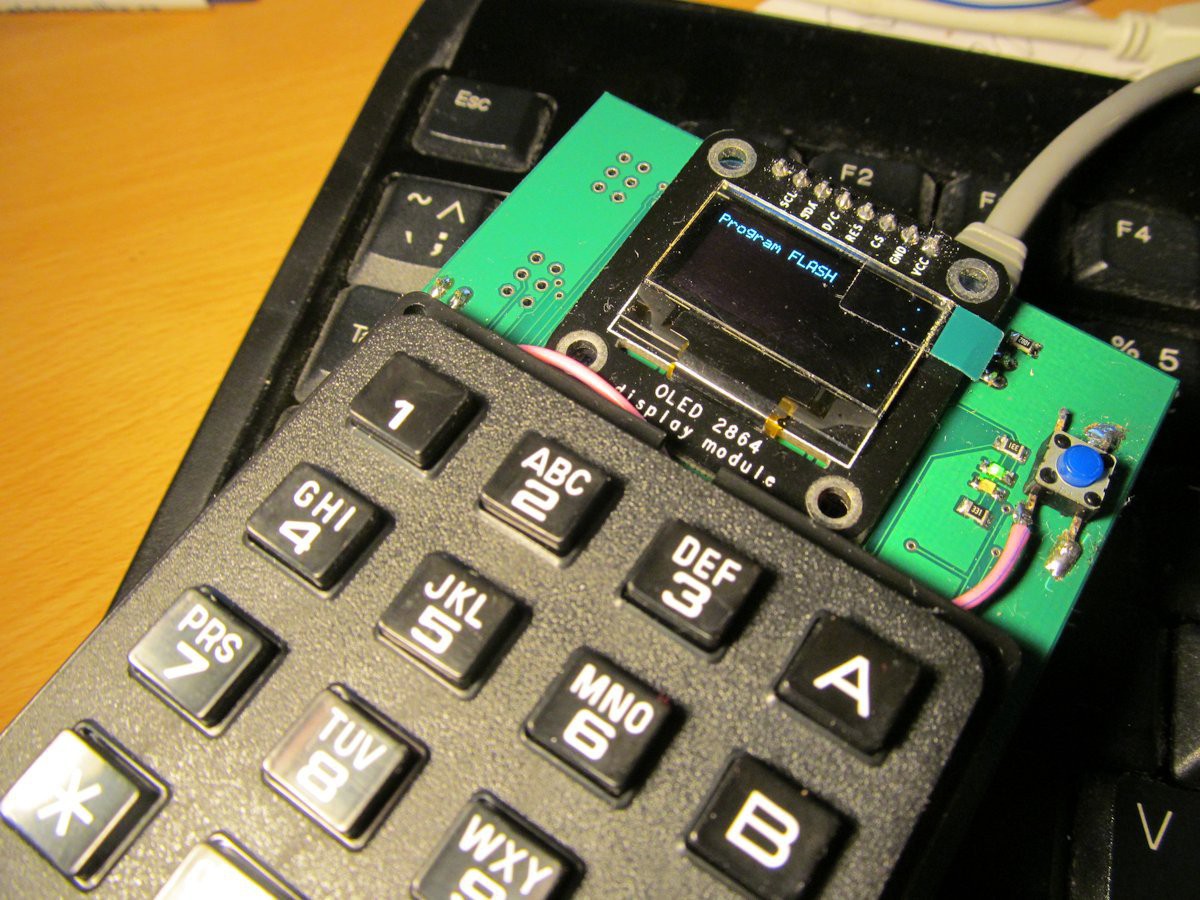
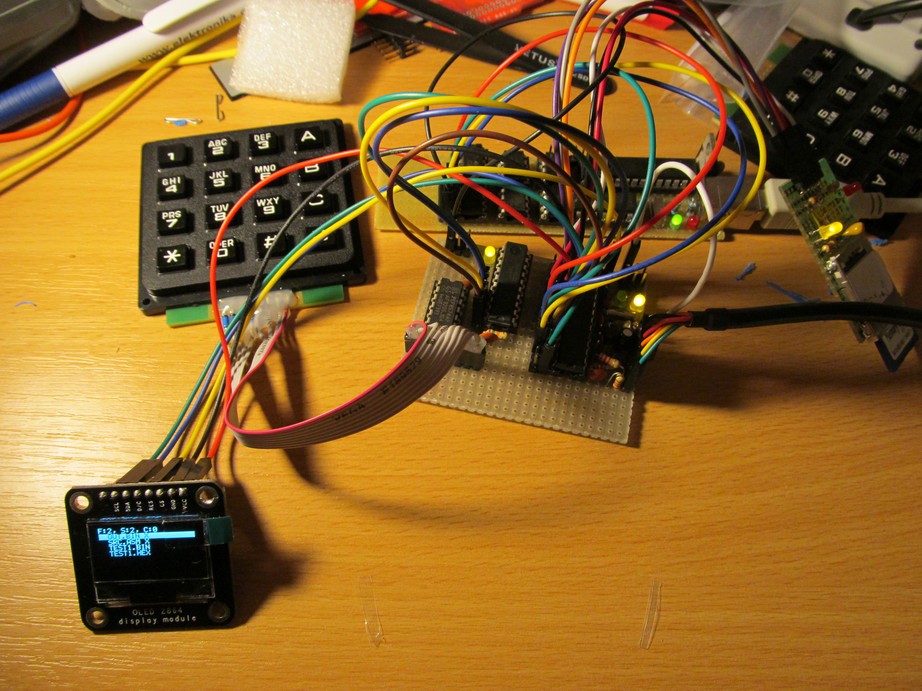
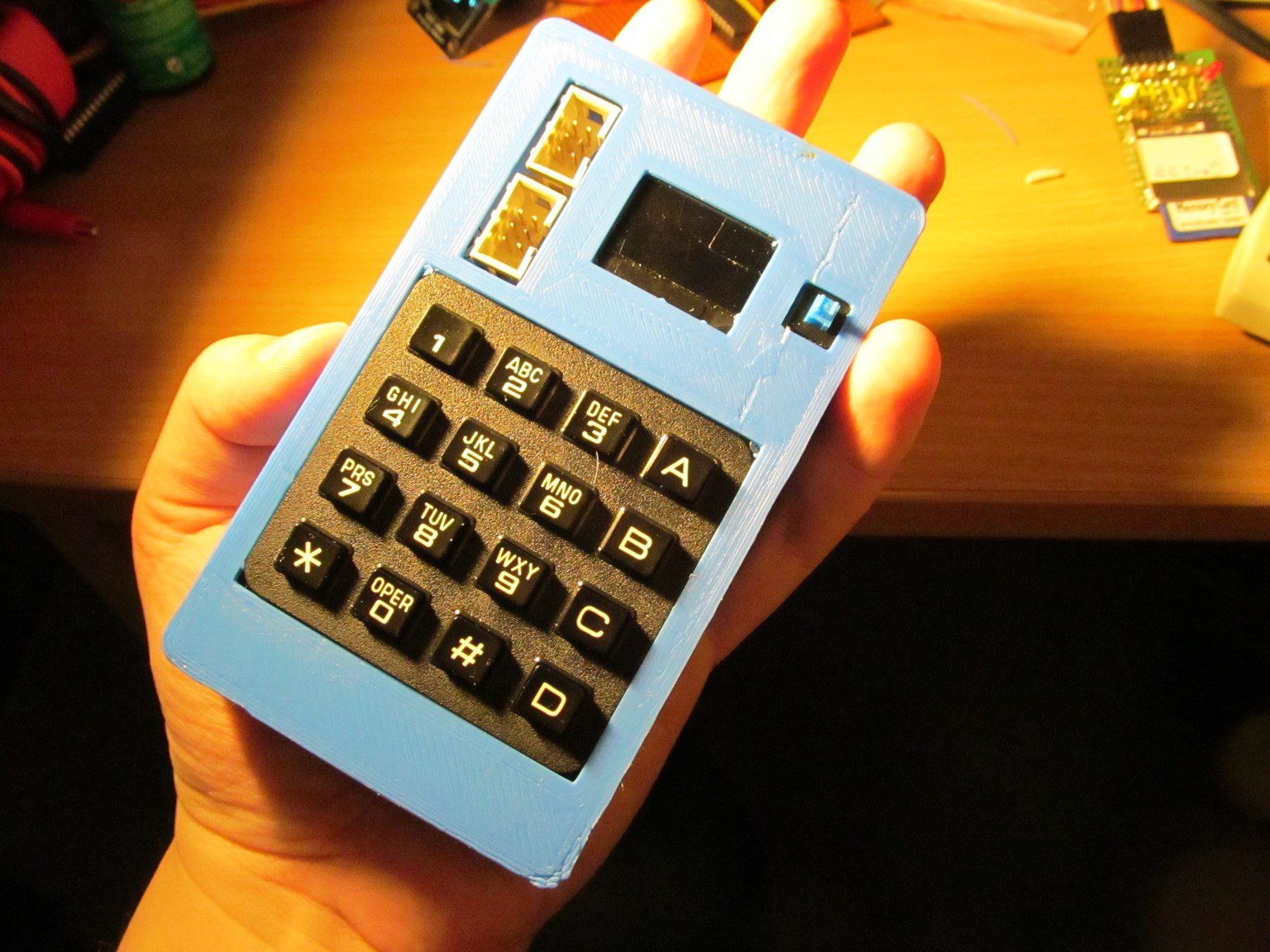
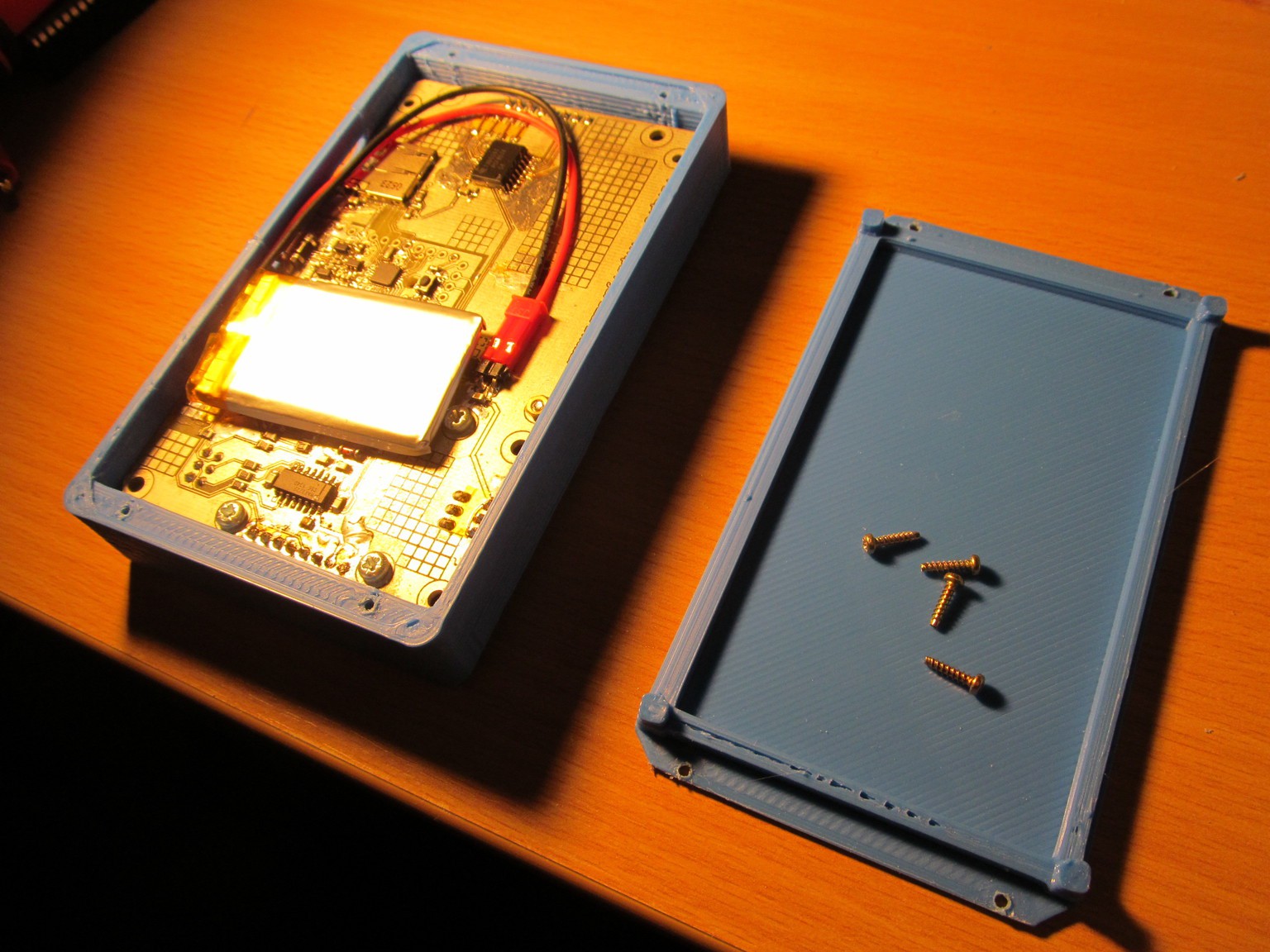
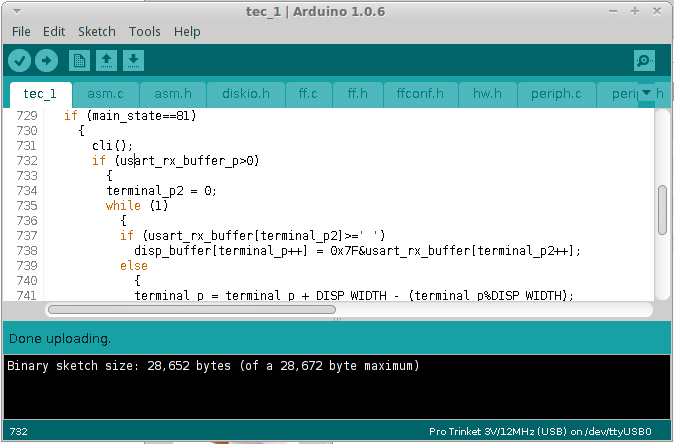
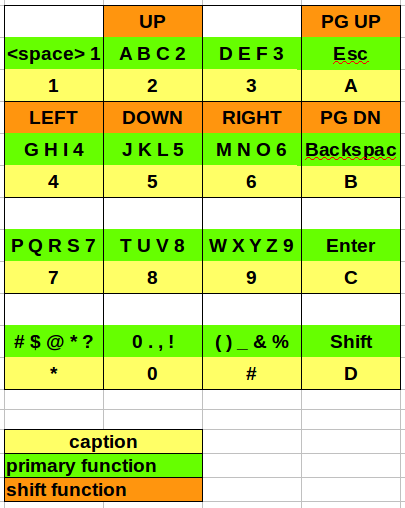
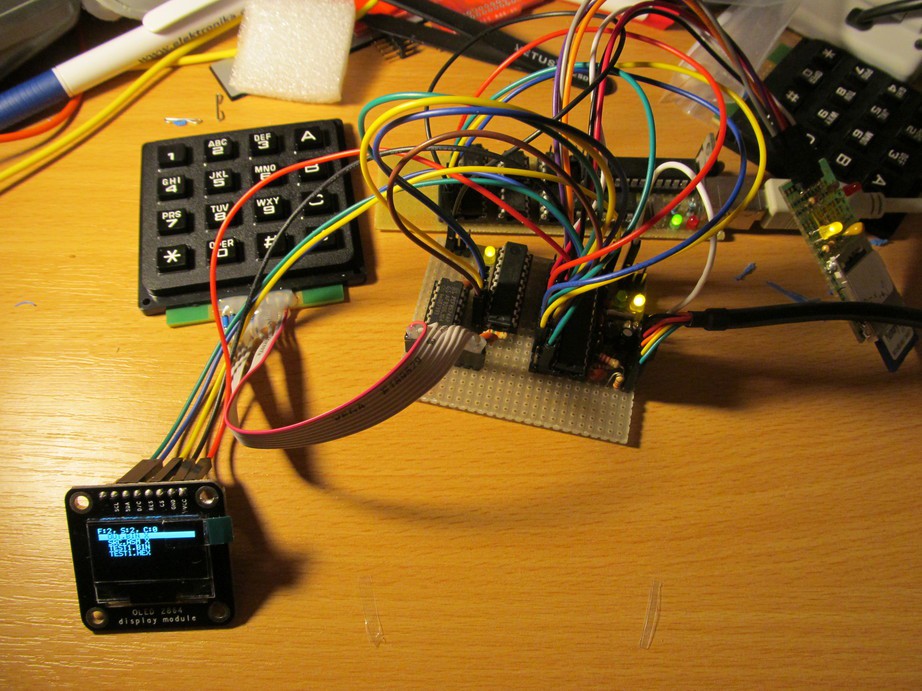
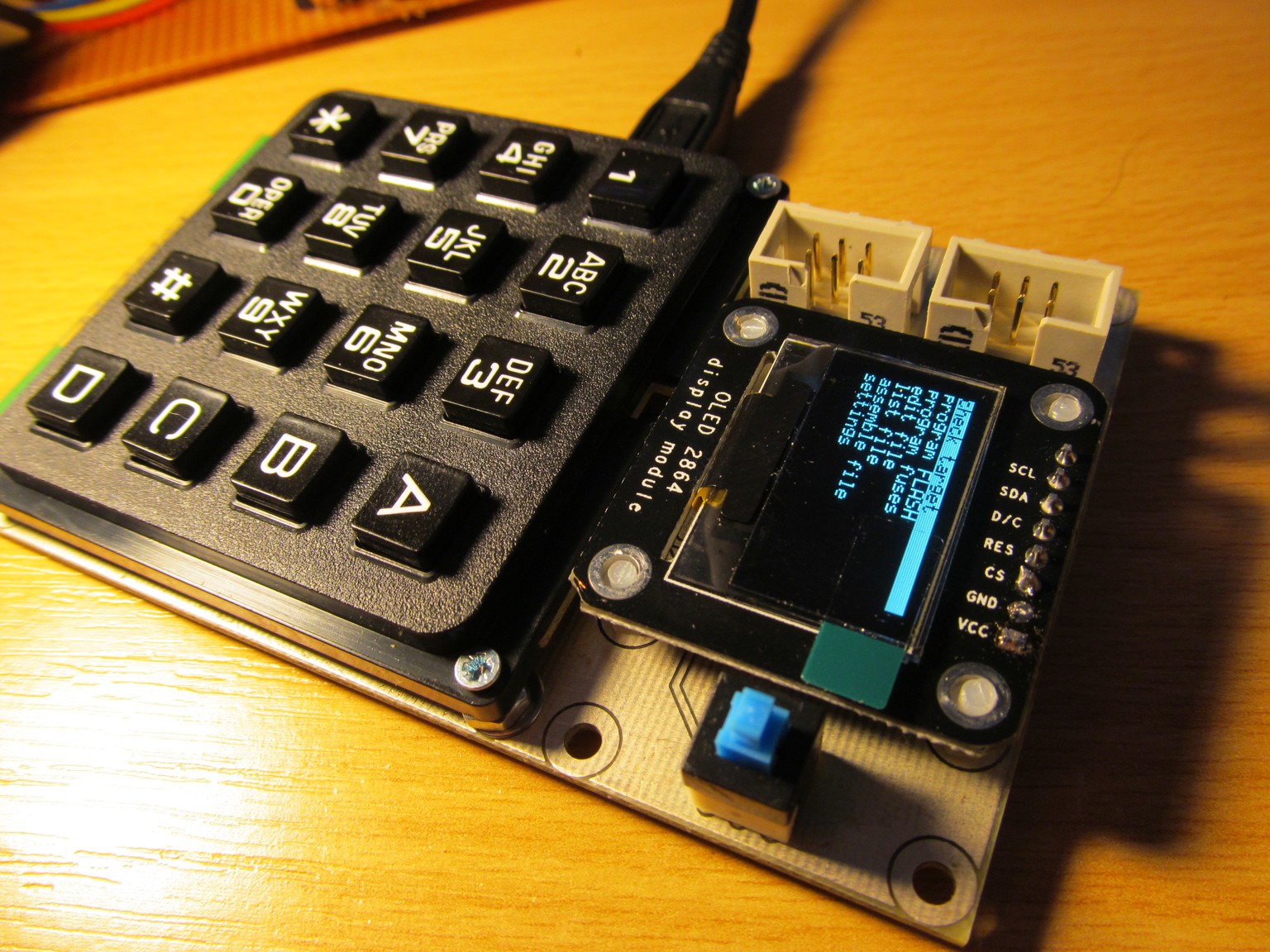
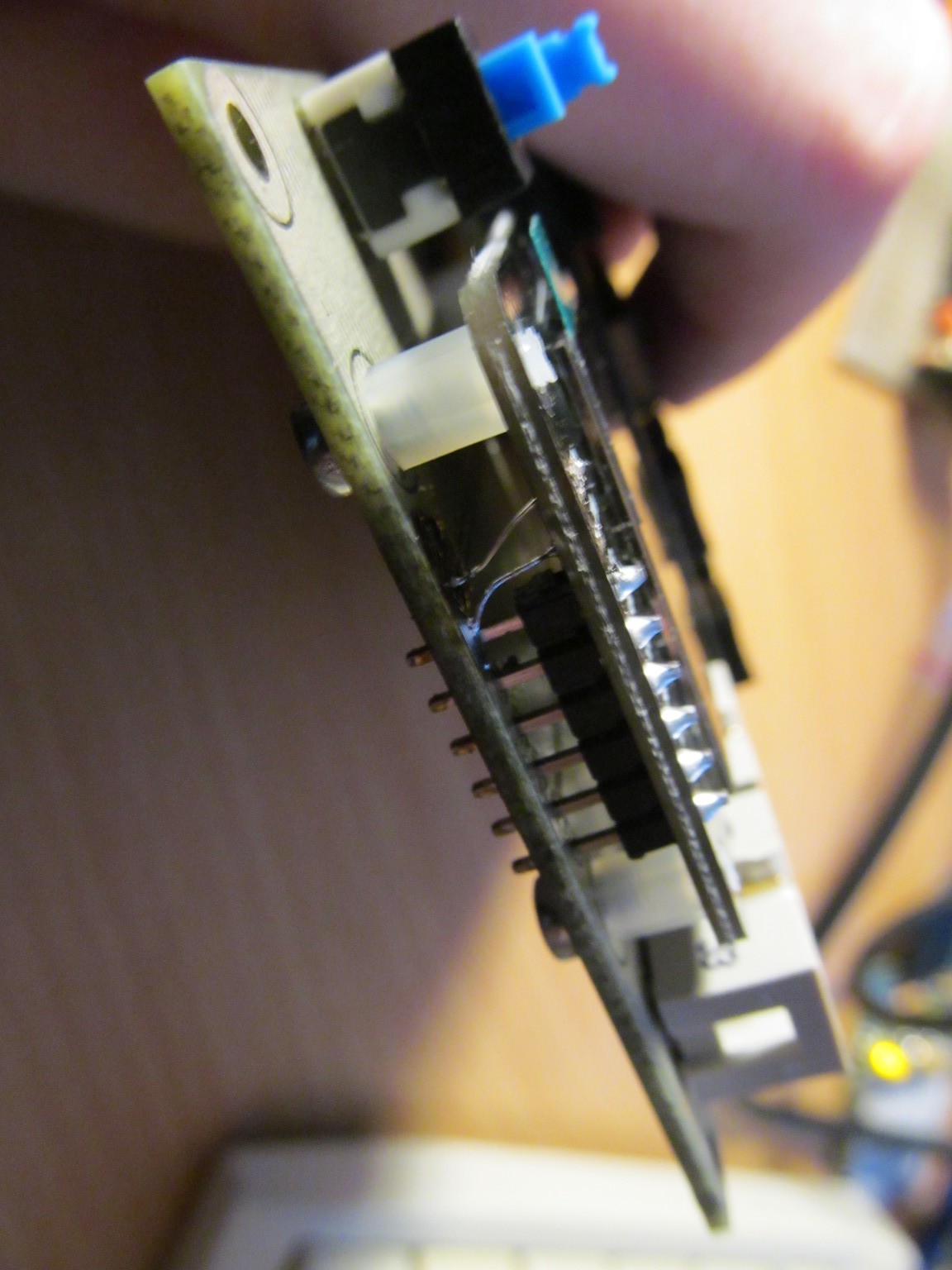
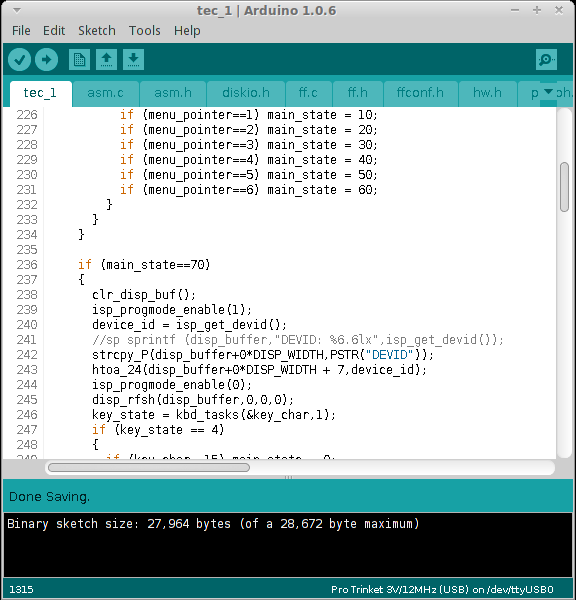
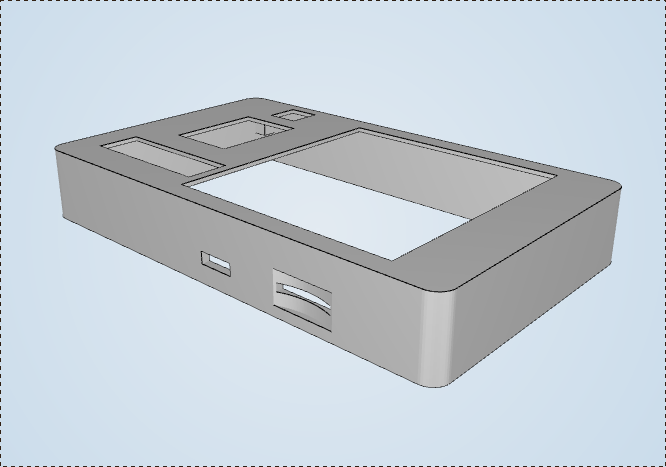
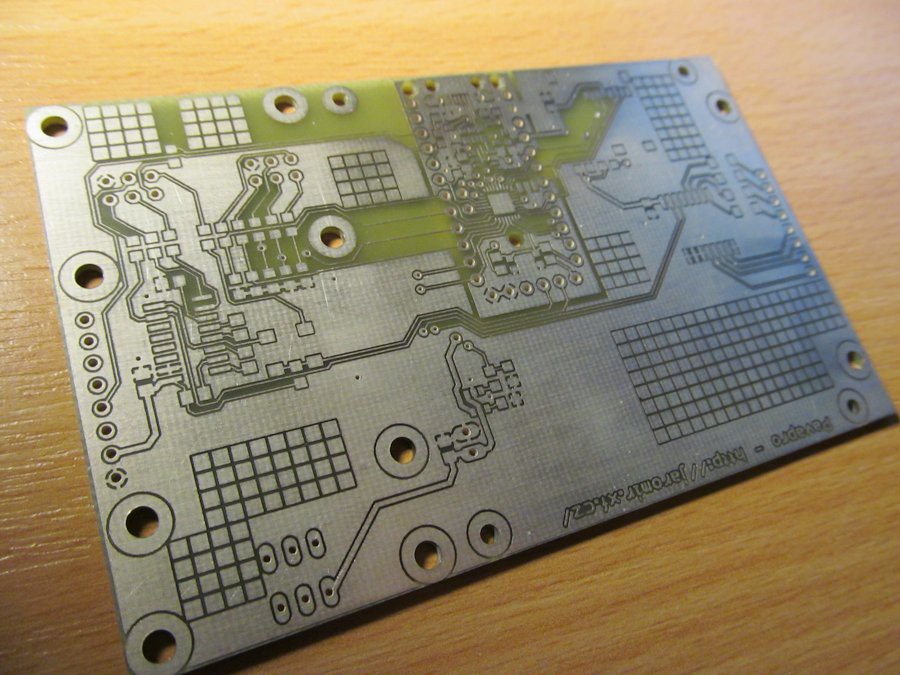






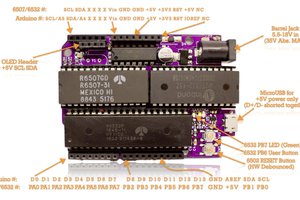
 Anders Nielsen
Anders Nielsen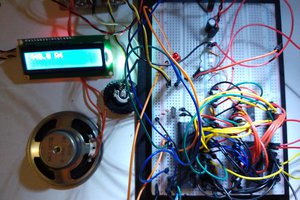
 Ken Yap
Ken Yap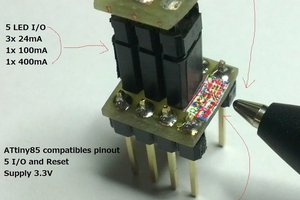
 Antti Lukats
Antti Lukats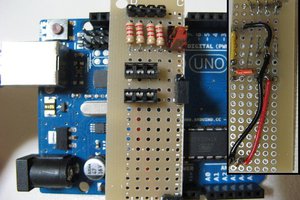
 shlonkin
shlonkin
Hello. I recently came across this project, it's great. I also have some questions about him. Is it possible to use the st7735 display, it has a built-in SD card reader. The 4x4 keyboard seems terribly large compared to the LCD. You could use four keys (up, down, back and enter) if you did not use the edit file, asemble and serial terminal functions